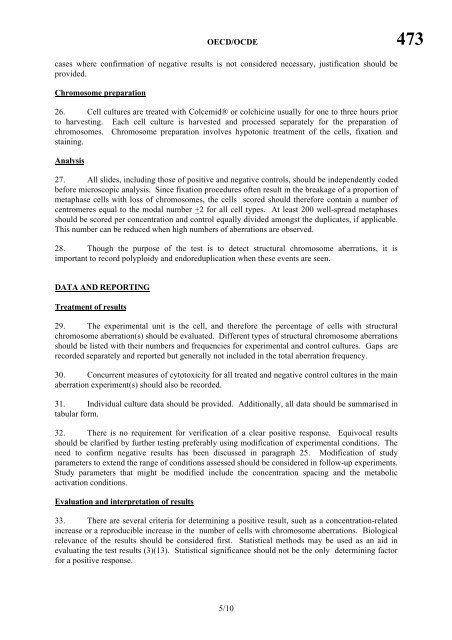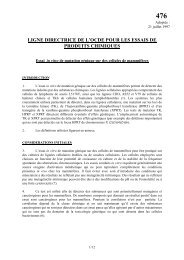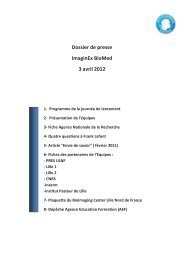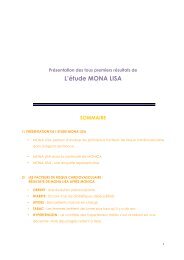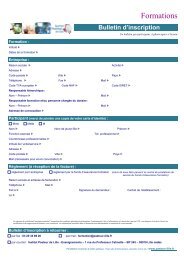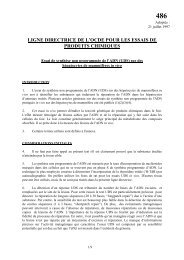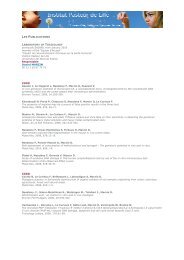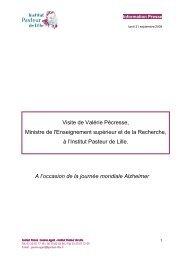OECD GUIDELINE FOR THE TESTING OF CHEMICALS
OECD GUIDELINE FOR THE TESTING OF CHEMICALS
OECD GUIDELINE FOR THE TESTING OF CHEMICALS
You also want an ePaper? Increase the reach of your titles
YUMPU automatically turns print PDFs into web optimized ePapers that Google loves.
<strong>OECD</strong>/OCDE 473cases where confirmation of negative results is not considered necessary, justification should beprovided.Chromosome preparation26. Cell cultures are treated with Colcemid® or colchicine usually for one to three hours priorto harvesting. Each cell culture is harvested and processed separately for the preparation ofchromosomes. Chromosome preparation involves hypotonic treatment of the cells, fixation andstaining.Analysis27. All slides, including those of positive and negative controls, should be independently codedbefore microscopic analysis. Since fixation procedures often result in the breakage of a proportion ofmetaphase cells with loss of chromosomes, the cells scored should therefore contain a number ofcentromeres equal to the modal number +2 for all cell types. At least 200 well-spread metaphasesshould be scored per concentration and control equally divided amongst the duplicates, if applicable.This number can be reduced when high numbers of aberrations are observed.28. Though the purpose of the test is to detect structural chromosome aberrations, it isimportant to record polyploidy and endoreduplication when these events are seen.DATA AND REPORTINGTreatment of results29. The experimental unit is the cell, and therefore the percentage of cells with structuralchromosome aberration(s) should be evaluated. Different types of structural chromosome aberrationsshould be listed with their numbers and frequencies for experimental and control cultures. Gaps arerecorded separately and reported but generally not included in the total aberration frequency.30. Concurrent measures of cytotoxicity for all treated and negative control cultures in the mainaberration experiment(s) should also be recorded.31. Individual culture data should be provided. Additionally, all data should be summarised intabular form.32. There is no requirement for verification of a clear positive response. Equivocal resultsshould be clarified by further testing preferably using modification of experimental conditions. Theneed to confirm negative results has been discussed in paragraph 25. Modification of studyparameters to extend the range of conditions assessed should be considered in follow-up experiments.Study parameters that might be modified include the concentration spacing and the metabolicactivation conditions.Evaluation and interpretation of results33. There are several criteria for determining a positive result, such as a concentration-relatedincrease or a reproducible increase in the number of cells with chromosome aberrations. Biologicalrelevance of the results should be considered first. Statistical methods may be used as an aid inevaluating the test results (3)(13). Statistical significance should not be the only determining factorfor a positive response.5/10


